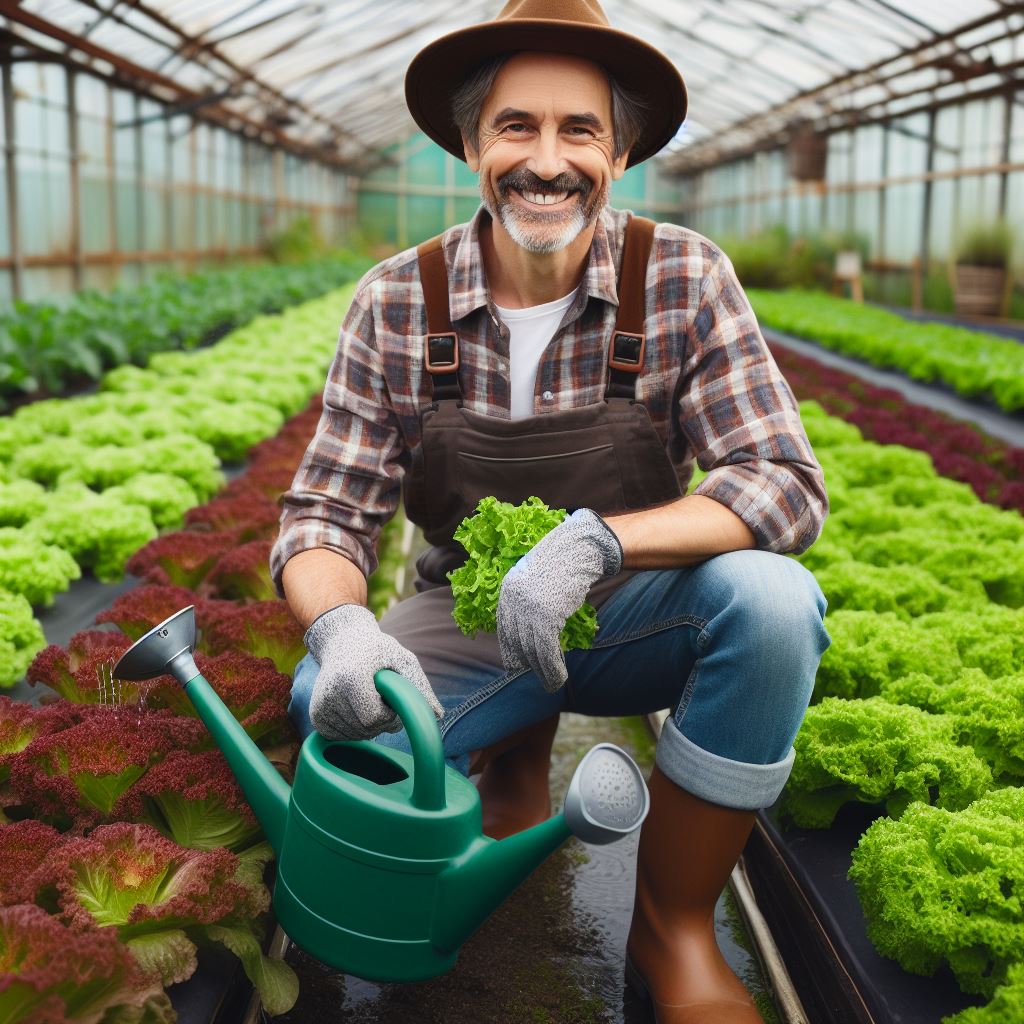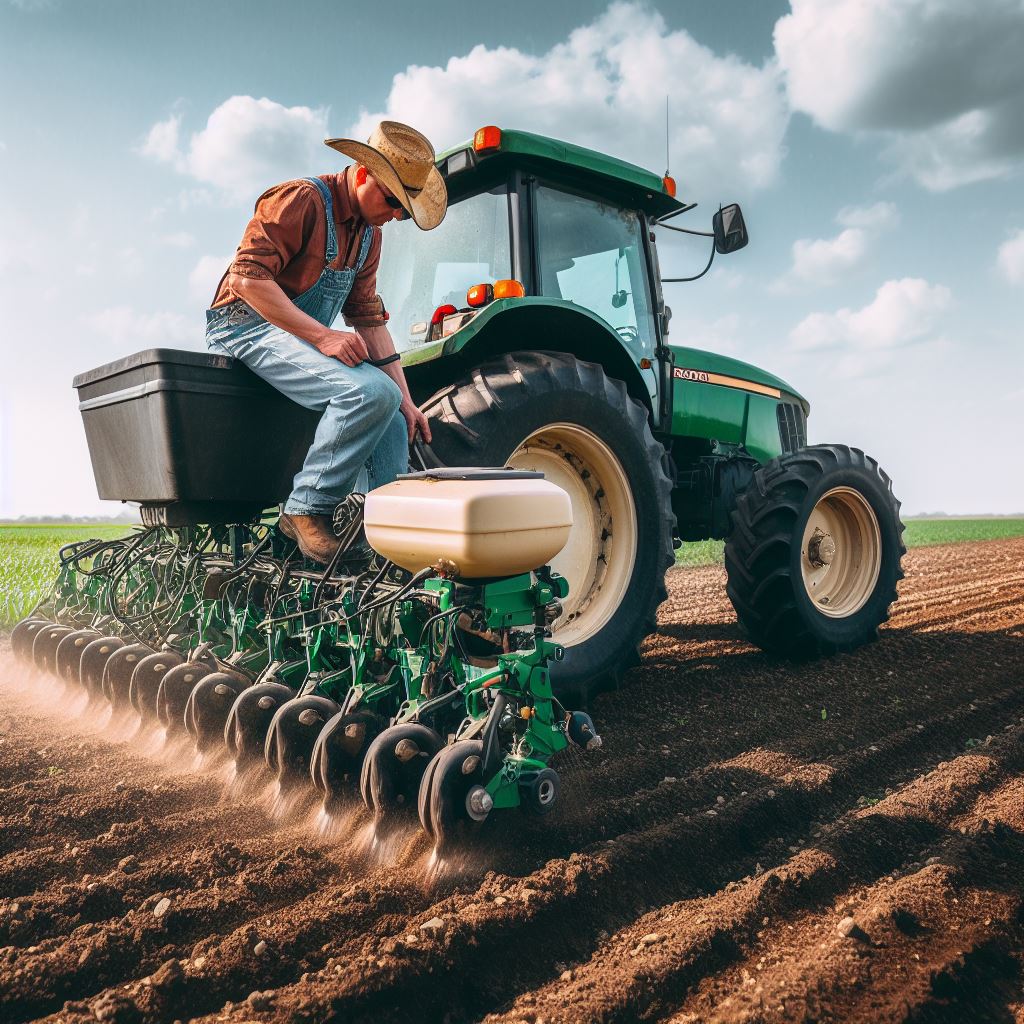Introduction
Welcome to the realm of greenhouse growing, where the marriage of technology and horticulture unlocks the secrets to bountiful harvests.
Greenhouse growing has become increasingly important in modern agriculture due to its numerous benefits.
It allows for year-round cultivation, protects crops from pests and adverse weather conditions, and optimizes resource usage.
In this guide, we delve into the art and science of cultivating thriving crops within the sheltered embrace of a greenhouse.
From innovative techniques to tried-and-true practices, discover a trove of tips that promise to elevate your yields and transform your greenhouse into a flourishing haven of agricultural abundance.
Embrace the potential of controlled environments as we unravel the nuances of successful greenhouse cultivation, offering insights that pave the way for a more fruitful and sustainable harvest.
Join us on this journey as we navigate the intricate landscape of greenhouse growing, empowering you to nurture healthier plants and reap the rewards of your labor.
This blog post aims to provide valuable tips and insights for individuals interested in greenhouse growing.
By following these tips, readers can maximize their yields, increase profitability, and ensure a successful harvest.
Understanding Greenhouse Growing
Definition of greenhouse growing
Greenhouse growing refers to the practice of cultivating plants inside a controlled environment, typically made of glass or transparent plastic, to provide optimum growing conditions for plants.
Advantages of greenhouse growing
- Extended growing seasons: Greenhouses allow for year-round cultivation, enabling farmers to grow crops even during colder months.
- Protection from harsh weather: Greenhouse structures shield plants from extreme weather conditions like heavy rain, hail, strong winds, or excessive heat, reducing crop damage.
- Pest and disease control: Greenhouses act as a physical barrier, preventing pests, insects, and diseases from attacking plants, leading to healthier crops and higher yields.
- Customizable climate control: With greenhouses, farmers have the ability to control temperature, humidity, and lighting, creating ideal growing conditions for different plant varieties.
- Increased yields: By providing optimal growing conditions, greenhouses can significantly boost crop productivity, resulting in higher yields compared to traditional open-field farming.
Types of greenhouse structures
- Glass greenhouses: These structures are made primarily of glass and offer excellent light transmission, heat retention, and aesthetics. They are more expensive than plastic alternatives but have better durability.
- Plastic greenhouses: Plastic polyethylene films or polycarbonate sheets are commonly used for constructing these structures. They are cost-effective, lightweight, and offer adequate insulation.
- Hoop greenhouses: These structures consist of curved metal or PVC pipes covered with plastic, forming a hoop shape. They are easy to assemble, affordable, and suitable for small-scale farming.
- Venlo greenhouses: With their gable-shaped roofs and high-quality glass panels, Venlo greenhouses provide maximum light transmission and efficient air circulation. They are commonly used for commercial production.
Essential greenhouse supplies
- Ventilation systems: Proper air circulation is crucial for preventing humidity-related problems and optimizing plant growth. This can be achieved through natural ventilation, exhaust fans, or automated systems.
- Heating systems: Greenhouses often require supplemental heating to maintain a consistent temperature during colder seasons. Options include propane heaters, electric heaters, or geothermal heating systems.
- Irrigation and watering systems: Greenhouses need adequate water supply for plant growth. Drip irrigation systems, misting systems, or overhead sprinklers can be used to provide controlled and efficient watering.
- Growing media: Soilless media, such as peat moss, coconut coir, or perlite, are commonly used in greenhouse growing to ensure good drainage, aeration, and nutrient availability for plant roots.
- Shade cloth: To regulate light intensity and protect plants from excessive heat, shade cloth can be used. It helps prevent sunburn and reduces water evaporation from the soil.
- Plant supports: Trellises, stakes, or cages are essential for supporting climbing or vining plants and preventing damage to their structures or fruits.
- Pest control supplies: Greenhouses should have appropriate pest control measures in place, including insect screens, sticky traps, or safe insecticides for organic farming.
In fact, greenhouse growing offers numerous benefits, including extended growing seasons, weather protection, and increased control over plant environment.
Different types of greenhouse structures and essential supplies are available to meet specific farming needs.
By utilizing these resources effectively, farmers can achieve better yields and success in greenhouse cultivation.
Selecting the Right Crops for Greenhouse Growing
A successful greenhouse operation starts with selecting the right crops for cultivation.
By choosing the appropriate crops, you can maximize your yields and optimize the use of your greenhouse space.
Transform Your Agribusiness
Unlock your farm's potential with expert advice tailored to your needs. Get actionable steps that drive real results.
Get StartedHere are some factors to consider when selecting crops for greenhouse growing:
Factors to consider when choosing crops
- Climate suitability: Assess whether the crops you want to grow thrive in the greenhouse environment and can withstand temperature fluctuations.
- Market demand: Research local market demands and trends to identify crops that have a high demand and can be profitable.
- Growth time: Consider the time it takes for a crop to reach maturity. Shorter growth cycles can maximize your productivity and turnover.
- Space utilization: Determine the space requirements of each crop and ensure they can be efficiently accommodated in your greenhouse.
- Resource efficiency: Evaluate the crop’s water and nutrient needs to optimize resource utilization and minimize waste.
- Pest and disease resistance: Select crops that are less susceptible to common greenhouse pests and diseases to minimize the need for chemical interventions.
Best crops for greenhouse growing
While the choice of crops ultimately depends on your specific circumstances, here are some crops that are generally well-suited for greenhouse cultivation:
- Tomatoes: High-yielding and popular, tomatoes are a staple for greenhouse growers. Choose from a wide variety of cherry, beefsteak, or heirloom tomatoes.
- Cucumbers: These vining plants thrive in the controlled environment of a greenhouse and can produce plentiful harvests.
- Peppers: Bell peppers and chili peppers are profitable crops that can be easily grown in a greenhouse.
- Lettuce and leafy greens: With their short growth cycles, lettuce and greens such as spinach and kale are ideal for continuous harvests.
- Herbs: Cultivating herbs like basil, parsley, or mint can provide a high return on investment due to their value in culinary applications and medicinal properties.
- Strawberries: These succulent fruits flourish in greenhouses, presenting an opportunity for year-round production.
In-demand crops for better yields
If you want to optimize your yields and tap into lucrative markets, consider growing the following crops with high demand:
- Microgreens: These highly nutritious baby plants are increasingly popular among health-conscious consumers.
- Mushrooms: Varieties like oyster and shiitake mushrooms have a growing market and can be cultivated indoors successfully.
- Exotic fruits and vegetables: Unique crops such as dragon fruit, passion fruit, or specialty peppers can fetch premium prices.
- Organic and heirloom varieties: Growing organic or heirloom crops appeals to customers seeking healthier and more sustainable options.
- Edible flowers: Flowers like nasturtiums, pansies, and marigolds not only add visual appeal but also offer culinary value.
Selecting the right crops for your greenhouse is a critical step towards achieving better yields and profitability.
Evaluate the factors mentioned above and explore the best and in-demand crops that suit your market and resources.
By making informed choices, you can cultivate a successful greenhouse business.
Providing Optimal Growing Conditions
Temperature Control Inside the Greenhouse
- Maintain a consistent temperature range between 65-75 degrees Fahrenheit for most plants.
- Install a thermostat to monitor and regulate the greenhouse temperature.
- Use shade cloth or reflective material to prevent overheating during hot summer months.
- Insulate the greenhouse during the winter to protect plants from extreme cold temperatures.
Managing Humidity Levels
- Monitor and maintain relative humidity levels between 50-70% for optimal plant growth.
- Use a hygrometer to measure humidity and a humidifier or dehumidifier to adjust levels as needed.
- Avoid excessive condensation by providing adequate ventilation and air circulation.
Importance of Proper Ventilation
- Install vents or windows to allow for fresh air exchange and control temperature and humidity levels.
- Use fans to promote air circulation and prevent stagnant air, which can lead to pest and disease issues.
- Consider using an automated ventilation system to ensure consistent and proper air flow.
Using Artificial Lighting Effectively
- Supplement natural sunlight with artificial lighting to extend the growing season and increase yields.
- Choose high-quality, energy-efficient LED grow lights for optimal plant growth and cost savings.
- Position the lights at the correct height and distance from the plants to provide adequate light intensity.
- Set a lighting schedule that mimics natural daylight to promote healthy plant growth and flowering.
In essence, providing optimal growing conditions is essential for achieving better yields in greenhouse cultivation.
Temperature control inside the greenhouse is crucial, and maintaining a consistent temperature range is key.
Monitoring and managing humidity levels are also important factors to consider. Proper ventilation ensures fresh air exchange and prevents detrimental issues.
Finally, using artificial lighting effectively can supplement natural sunlight and promote healthy plant growth.
By implementing these tips, greenhouse growers can maximize their yields and achieve successful results.
Read: Crop Rotation Benefits: A Sustainable Practice
Soil and Water Management
Soil preparation for greenhouse growing
- Start by testing the soil to determine its nutrient content and pH level.
- Remove any weeds or debris from the greenhouse area before working on the soil.
- Use a tiller or shovel to loosen the soil and break up any compacted areas.
- Incorporate organic matter such as compost or well-rotted manure to improve soil fertility.
- Consider adding amendments like perlite or vermiculite to enhance soil drainage and aeration.
- Level the soil surface to ensure proper water distribution and prevent waterlogging.
Maintaining proper soil moisture
- Monitor the moisture level in the greenhouse soil regularly using a moisture meter or your fingers.
- Keep the soil consistently moist but not overly saturated to prevent root rot and fungal diseases.
- Mulch the soil surface with organic materials like straw or wood chips to reduce evaporation and maintain moisture.
- Install an irrigation system with a timer to ensure consistent and controlled watering.
Proper watering techniques
- Water the greenhouse plants early in the morning to allow foliage to dry before evening.
- Use drip irrigation or soaker hoses to deliver water directly to the plant roots, minimizing wastage.
- Avoid overhead sprinklers as they can lead to disease spread and water loss due to evaporation.
- Water the plants deeply and thoroughly to encourage deep root growth and drought tolerance.
- Adjust watering frequency based on weather conditions and plant needs.
Fertilization and nutrient management
- Test the greenhouse soil regularly to determine nutrient deficiencies and adjust fertilizer application accordingly.
- Use slow-release organic fertilizers to provide a steady supply of nutrients over time.
- Consider using liquid organic fertilizers as foliar sprays for quick nutrient absorption by the plants.
- Avoid over-fertilization, as it can lead to nutrient imbalances and plant stress.
- Implement a crop rotation system to prevent nutrient depletion and maintain soil health.
Proper soil and water management are crucial for maximizing greenhouse yields.
By preparing the soil adequately, ensuring proper moisture levels, using appropriate watering techniques, and managing fertilization, you can create an optimal growing environment for your plants.
Remember to regularly test the soil, monitor moisture levels, and adjust your practices based on the specific needs of your greenhouse crops.
With these tips, you are on your way to achieving bountiful harvests in your greenhouse.
Read: Managing Pests in Organic Vegetable Farms

Pest and Disease Management
Common pests and diseases in greenhouses
- Aphids: small, soft-bodied insects that suck sap from plants and transmit viruses.
- Whiteflies: tiny, white, moth-like insects that feed on plant sap and cause yellowing and wilting.
- Thrips: slender insects that pierce plant tissue, causing silver or bronze streaks and distorted growth.
- Spider mites: tiny arachnids that suck plant sap, causing yellowing leaves and webbing.
- Fungal diseases: such as powdery mildew, botrytis, and damping-off, which thrive in humid conditions.
- Bacterial diseases: like bacterial leaf spot and soft rot, that can lead to wilting and decay.
Implementing preventive measures
- Monitor plants regularly to detect early signs of pests or diseases.
- Use physical barriers like screens or nets to prevent entry of pests into the greenhouse.
- Sanitize tools and equipment to prevent the spread of pathogens.
- Maintain good air circulation and proper spacing between plants to reduce humidity.
- Practice crop rotation to prevent the buildup of pest populations.
- Use resistant varieties whenever possible to decrease susceptibility to diseases.
Using organic and chemical controls appropriately
Organic controls
- Introduce beneficial insects like ladybugs and lacewings that prey on pests.
- Use insecticidal soaps or oils to suffocate soft-bodied pests.
- Apply biological control agents such as nematodes or fungi to target specific pests.
- Use organic fungicides like copper or sulfur to manage fungal diseases.
Chemical controls
- Use insecticides selectively and according to label instructions.
- Rotate the use of different chemical insecticides to reduce the risk of resistance.
- Apply fungicides when necessary, targeting the specific fungal disease.
- Always wear protective clothing and follow safety guidelines when using chemical controls.
Pest and Disease Management Tips for Better Yields
- Maintain good hygiene in the greenhouse by removing plant debris and regularly cleaning surfaces.
- Identify pests and diseases accurately to choose the appropriate control measures.
- Establish an integrated pest management (IPM) program combining preventive, organic, and chemical methods.
- Monitor weather conditions to adjust watering and ventilation to prevent disease-friendly environments.
- Train greenhouse personnel on pest and disease identification to spot issues early.
- Consult local agricultural extension services or experts for advice on specific pest and disease management strategies.
By effectively managing pests and diseases in your greenhouse, you can prevent damage and promote healthier plants, leading to improved yields.
Remember the importance of preventive measures and the careful use of organic and chemical controls.
Implementing a comprehensive pest and disease management plan will help create a flourishing greenhouse environment.
Read: Climate Impact on Potato Growth: What to Know
Efficient Crop Maintenance and Support
Achieving better yields in greenhouse growing is not only about providing the right environment and conditions for plants to thrive.
Efficient crop maintenance and support are crucial aspects that play a significant role in maximizing productivity and ensuring healthy growth.
In this section, we will discuss various techniques and practices that can help you maintain and support your crops effectively.
Showcase Your Farming Business
Publish your professional farming services profile on our blog for a one-time fee of $200 and reach a dedicated audience of farmers and agribusiness owners.
Publish Your ProfilePruning and Training Techniques
- Regular pruning helps maintain the shape and size of plants, promoting better light penetration and air circulation.
- Proper training techniques, such as trellising or staking, provide support to plants and help optimize space utilization.
- Remove any diseased or damaged plant parts promptly to prevent the spread of pests and diseases.
- Regularly check for suckers or unwanted shoots that can divert energy from the main crop.
Ensuring Adequate Nutrient Uptake
- Develop a customized fertilization plan based on the specific nutrient requirements of your crops.
- Regularly test the soil to monitor nutrient levels and adjust the fertilization program accordingly.
- Consider using slow-release fertilizers or organic amendments to provide a steady supply of nutrients over time.
- Apply foliar sprays or targeted root feeding techniques to ensure efficient nutrient uptake.
Monitoring Plant Health and Growth
- Regularly inspect plants for signs of pests, diseases, or nutritional deficiencies.
- Implement a pest management program, including biological controls and integrated pest management strategies.
- Monitor environmental conditions, such as temperature, humidity, and CO2 levels, to optimize plant growth.
- Keep track of plant development stages to anticipate their needs and adjust cultivation practices accordingly.
Efficient crop maintenance and support contribute to overall plant health, leading to better yields and higher quality produce.
By implementing pruning and training techniques, you can shape your crops for optimal growth and minimize the risk of disease transmission.
Ensuring adequate nutrient uptake plays a fundamental role in providing essential elements for plant development.
Monitoring plant health and growth allows for timely intervention and adjustment of cultivation practices to maximize productivity.
Read: Organic Fertilizers: Boosting Soil Health
Gain More Insights: Mastering Weed Eradication in Crop Fields
Harvesting and Yield Enhancement Techniques
Knowing the Right Time to Harvest
- Check the color and texture of the fruits or vegetables to determine their ripeness.
- Observe for any signs of maturity, such as seeds turning dark or fruits becoming firm.
- Timing is crucial as harvesting too early or too late can affect the taste and quality.
- Refer to specific plant varieties for recommended harvest times and techniques.
Post-Harvest Handling and Storage Guidelines
- Handle harvested produce with care to avoid bruising or damaging their delicate structure.
- Remove any damaged or spoiled fruits or vegetables to prevent the spread of diseases.
- Clean the harvested produce gently to remove dirt or debris using a soft cloth or brush.
- Store the harvested crops in appropriate containers that provide proper ventilation and drainage.
- Control temperature and humidity levels to extend the shelf life of the produce.
- Regularly inspect stored crops for any signs of deterioration and remove damaged produce promptly.
Ways to Enhance Yield in Greenhouse Growing
- Choose the right greenhouse structure and design to maximize the use of space and light.
- Utilize vertical farming techniques such as trellising or stacking to increase planting density.
- Properly manage the greenhouse environment, including temperature, humidity, and irrigation.
- Provide adequate nutrition by using organic fertilizers tailored for specific plant requirements.
- Practice crop rotation and pest control measures to minimize disease and pest infestations.
- Ensure effective pollination by attracting pollinators or using artificial pollination methods.
- Implement pruning and training techniques to promote proper plant growth and maximize yield.
- Monitor and adjust the watering schedule based on the specific needs of different plant varieties.
- Regularly inspect plants for signs of nutrient deficiencies, diseases, or pests and take immediate action.
- Keep records of the greenhouse operations and experiment with different techniques for continuous improvement.
By following these harvesting and yield enhancement techniques in greenhouse growing, you can optimize your crop production and enjoy better yields in a sustainable and efficient manner.
You Might Also Like: Eco-Friendly Pest Control in Crop Management
You Might Also Like: The Role of Compost in Soil Health
Conclusion
Throughout this blog section, we have explored various tips and strategies to enhance greenhouse growing and achieve better yields.
We discussed the significance of choosing appropriate plant varieties, maintaining ideal temperature and humidity levels, providing sufficient lighting, and implementing proper ventilation systems.
Additionally, we emphasized the importance of regular monitoring, watering, fertilizing, and pest control.
By following these tips, greenhouse growers can maximize their crop production and increase the quality of their harvest.
To all the greenhouse growers out there, we want to applaud your dedication and passion for cultivating plants in this controlled environment.
Your commitment to sustainable and efficient agricultural practices is commendable.
By implementing the tips discussed in this blog section, you are not only improving your yields, but also contributing to a greener future. Keep up the good work!
As we conclude this section, we urge our readers to put the tips into action and take advantage of the immense potential that greenhouse growing offers.
By adopting these strategies, you can transform your greenhouse into a productive and thriving space.
Whether you are a beginner or an experienced grower, continuous learning and experimentation are key.
Share your success stories, seek advice from fellow growers, and never stop exploring new techniques.
Together, let’s cultivate a greener and more fruitful future through greenhouse growing.
Remember, the journey toward better yields begins with a single seed and a world of possibilities.
Happy growing!




